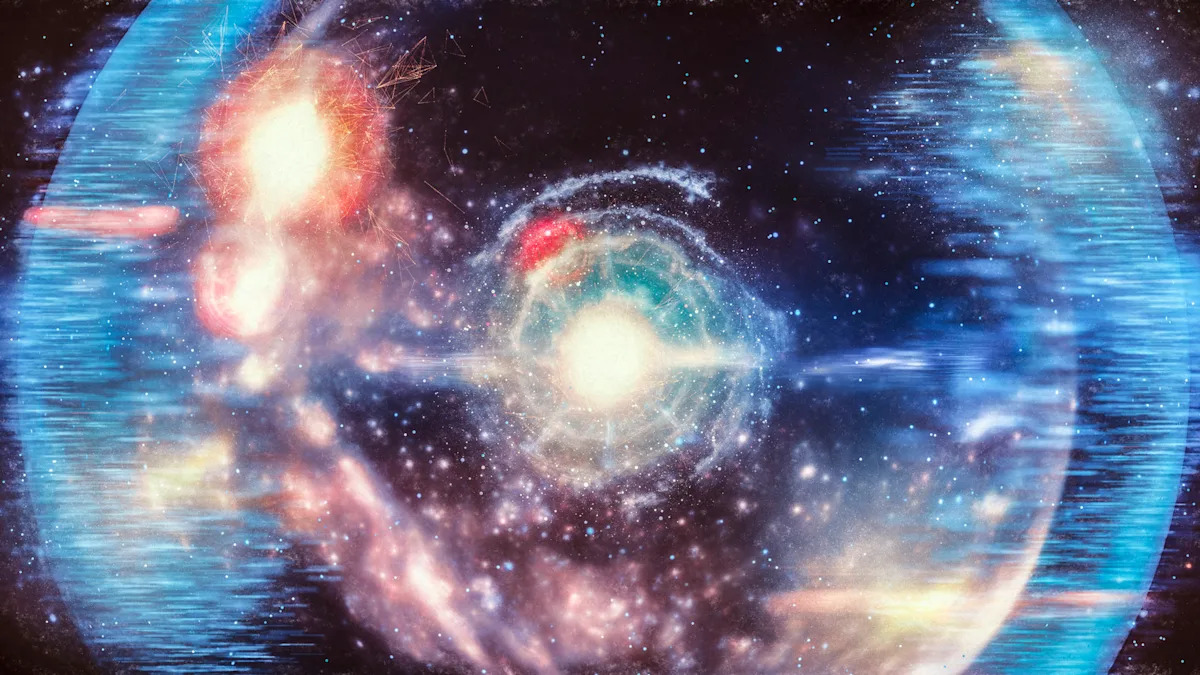For decades, scientists have relied on a popular idea referred to as cosmic inflation to explain how the universe began and why it looks the way it does today. This theory suggests the universe expanded at an unimaginable speed just moments after the Big Bang. Despite popularity, it still faces the problem that no one definitively knows what caused this to happen. Explanations have been proposed, but none proven. That has led a team of researchers to look for a fundamental way to explain the universe’s origins, leading them to propose an intriguing idea: Gravitational waves just might hold the key to best understanding the Big Bang.
The research was published in July 2025 in the American Physical Society’s Physical Review Journal under the title “Inflation without an inflaton.” It brought together a team of four scientists whose aim was to propose a new Big Bang Theory model that could help explain the origins of the universe. They wanted to create a model that didn’t rely on a mysterious inflation particle as the source of the universe’s expansion.
The team proposed that tiny ripples in space-time itself, known as gravitational waves, naturally produced the fluctuations that later became galaxies and stars. Their calculations show this process could match what astronomers actually observe, while also offering a seamless way for the universe to transition from rapid expansion to the radiation-filled cosmos we know today. In short, this model could explain inflation without needing any hypothetical new particles at all.
Read more: What Does Space Actually Smell Like? Here’s What Scientists Say
How this new model came about
A galaxy full of stars in space – Triff/Shutterstock
First, the researchers turned to quantum physics instead of relying on traditional cosmological models. They examined how tiny ripples in space-time, known as gravitational waves, could naturally give rise to density fluctuations. Their model showed that these ripples can emerge as a second-order effect of the gravitational waves, eventually becoming dominant and shaping the universe’s structure — stars, galaxies, and everything that we see in the night skies. They also investigated the inherent instability of the early universe — which could be twice as old as we initially thought — showing that this instability could provide a natural way for inflation to end and for the universe to shift into the radiation-filled state we see today.
Daniele Bertacca, one of the study’s researchers and a professor at University of Padova, told Space.com, “Too much flexibility in science can be problematic because it makes it difficult to determine whether a model is truly predicting something or simply adapting a posteriori to observed data.” Referring to the benefit of a theory based around gravitational waves rather than a mysterious inflaton (a hypothetical particle created by scientists to explain inflation), Bertacca also said, “It is precisely the elegance and simplicity of the proposed model, and the absence of free parameters, that are key.”
What this means for future Big Bang models

artistic image of the solar system with the sun, Earth, and the planets – Rbkomar/Getty Images
The researchers note that this model, focusing on ripples in space-time that created the beginnings of galaxies and cosmic structure, could still apply today based on our universe’s behavior. The team is interested to see if more observations and future studies further confirm this new model. If they do, this could revolutionize the way we understand the Big Bang Theory and the origin of the universe.
The team lead for this study, Raúl Jiménez from the University of Barcelona, emphasized to Space.com that it’s a thorough understanding of gravity and quantum physics that drives the theory and which could push it forward. Jiménez pointed out that without needing to account for the inflaton, the proposed new model is minimalist and clear. It offers a strong framework that can then be used for further testing and future predictions.
Daniele Bertacca also stated that the theory is good for the field of cosmology overall: “Like all theoretical models, ours must be confirmed by measurements and observations that researchers can analyze, evaluate, and compare with data from ground-based and space-based experiments today and in the near future … These gravitational ripples interact and build complexity over time, leading to testable predictions that researchers can now compare with real data.”
Enjoyed this article? Sign up to BGR’s free newsletter for the latest in tech and entertainment, plus tips and advice you’ll actually use.
Read the original article on BGR.
First Appeared on
Source link













